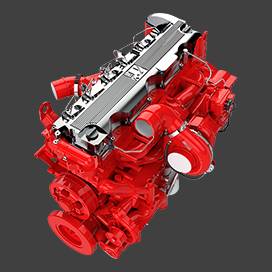Aug . 02, 2024 14:30 Back to list
Exploring the Functionality and Benefits of Electric Brake Drums in Modern Vehicle Systems
Understanding Electric Brake Drums A Detailed Overview
Electric brake drums are critical components in the braking systems of various vehicles, particularly in electric and hybrid models. Unlike traditional drum brakes that utilize hydraulic systems, electric brake drums rely on electric power to engage and disengage the braking mechanism. This innovation has led to enhanced efficiency, reliability, and safety in modern vehicles.
How Electric Brake Drums Work
At the core of electric brake drums is the drum itself, which is a cylindrical component that rotates with the wheel. Inside the drum, brake shoes arc outward against the inner surface of the drum when the brakes are activated. In electric brake systems, the activation is controlled by electric currents sent from the vehicle's onboard computer or brake controller, rather than hydraulic pressure.
When the brake pedal is pressed, an electric signal is sent to the brake system. This signal activates an electric motor or solenoid that applies pressure to the brake shoes, forcing them against the drum. The friction generated slows down the rotation of the wheel, ultimately bringing the vehicle to a stop. When the brake pedal is released, the electric current ceases, and the brake shoes retract, allowing the drum to rotate freely again.
Advantages of Electric Brake Drums
1. Improved Response Time Electric brake drums can react much faster than traditional hydraulic brakes. This quick response can be particularly advantageous in emergency braking situations, enhancing overall vehicle safety.
2. Reduced Maintenance Electric brake systems often require less maintenance compared to their hydraulic counterparts. The reduced number of moving parts minimizes wear and tear, leading to a longer operational life and lower maintenance costs.
3. Enhanced Control The precision of electric braking systems allows for better modulation of brake force. This leads to smoother braking and can contribute to vehicle stability, particularly during heavy braking or on slippery surfaces.
electric brake drums

4. Integration with Regenerative Braking Systems In electric and hybrid vehicles, electric brake drums can be effectively integrated with regenerative braking systems. This synergy allows the vehicle to convert kinetic energy back into electrical energy while slowing down, improving overall energy efficiency.
5. Compact Design Electric brake drums can be designed to take up less space than traditional brake systems. This compactness can lead to more efficient vehicle designs and can free up space for other components or cargo.
Applications of Electric Brake Drums
Electric brake drums are becoming increasingly popular in various applications beyond passenger vehicles. They are commonly used in electric buses, trucks, and trailers, particularly those equipped with advanced driver-assistance systems (ADAS). The reliability and precision of electric brakes are especially valuable in commercial applications where safety and performance are paramount.
Challenges and Future Developments
Despite their advantages, electric brake drums also face challenges. The dependency on electrical systems means that any electrical failure could lead to a complete loss of braking function. Manufacturers are continuously working to develop fail-safe mechanisms and redundancies to mitigate these risks.
Looking ahead, we can expect further advancements in electric brake technology. Researchers are exploring materials that could enhance the durability and efficiency of brake drums, and innovations in electronic control systems may lead to even better integration with vehicle dynamics and safety systems.
In conclusion, electric brake drums represent a significant evolution in vehicle braking systems. Their speed, efficiency, and compatibility with hybrid technologies make them a vital component of modern automotive engineering. As technology continues to advance, electric brake drums are poised to play an even more crucial role in the safety and performance of vehicles in the future.
-
Brake Drum Man - High-Quality Drum Brake Drums & Brake Shoes for Reliable Performance
NewsJun.24,2025
-
High-Quality Brake Drum Kamaz – Durable Drum Brake Drum & Brake Shoe Replacement
NewsJun.10,2025
-
High-Quality Brake Drum Liza for Drum Brake Systems - Superior Durability and Performance
NewsJun.10,2025
-
High-Quality Brake Drum Kamaz – Durable Drum Brake Drum & Brake Shoe Solutions
NewsJun.10,2025
-
Durable Kamaz Brake Drums High-Performance Truck Parts
NewsJun.09,2025
-
Premium Brake Drum Maz Kit with Shoes Enhanced Braking
NewsJun.09,2025
